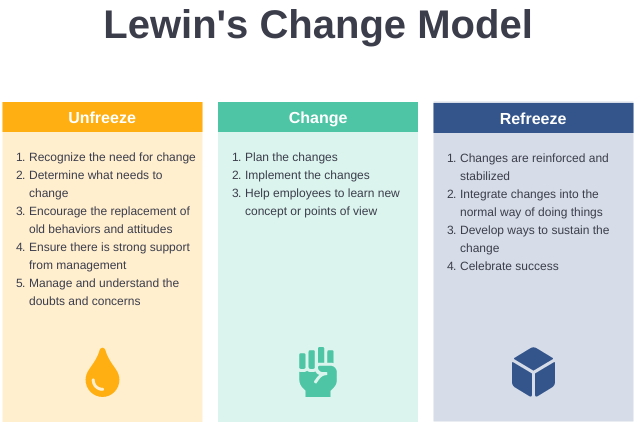Many managers adopt short-term, quick-fix solutions to organisational problems. Due to a lack of strategic planning, management often spends a lot of time “fighting fire with fire”. Quick-fix solutions do not solve underlying problems and have very little staying power. Change is doomed from the start when this approach is adopted. Many researchers, therefore, advocate the use of a planned change program, comprising a series of sequential steps. They argue that one cannot apply a formulaic approach to change because a variety of organisational features need to be analysed to understand the context within which the change process should be designed and implemented.
They mention features such as the scope of change required, the time frame, the power of the change agent to effect change, the diversity within the workforce and the capability for change within the organisation. It is beneficial, however, to consider the traditional approaches to planned change.
Most recommended planned change processes include the following sequential steps or variations thereof:
- Assess changes in the environment.
- Determine the performance gap (the gap between the current state and desired future state).
- Diagnose organisational problems.
- Identify sources of resistance to change.
- Set objectives for the change effort.
- Search for change strategies/consider alternative change interventions.
- Implement the change.
- Follow up on the change.
All this should be wrapped into a comprehensive, well-formulated communication plan to all stakeholders to the change process. (More about this later)
Kurt Lewin Change Model
Kurt Lewin developed a three-stage model of planned change explaining how to initiate, manage and stabilize the change process. The three stages are:

Unfreezing
This stage deals with motivating employees to replace their old behaviours and attitudes with those desired by management. The process starts with management disconfirming the usefulness or appropriateness of employees’ present behaviours or attitudes. The aim is to prepare employees to change, by getting them to become dissatisfied with the old way of doing things.
Changing
This stage involves learning – providing employees with new information, new behavioural models, or new ways of looking at things. The purpose is to help employees learn new concepts or points of view. Role models, mentors, experts, benchmarking results and training are useful mechanisms to facilitate change.
Refreezing
Change is stabilised by helping employees integrate the changed behaviour or attitude into their normal way of doing things. Employees are first given the chance to exhibit new behaviours or attitudes, and thereafter positive reinforcement is used to reinforce the desired change.
Kotter’s Model For Leading Change
John Kotter, an expert in leadership and change management, believes that organisational change typically fails because senior management commits one or more of the following errors:
- Failure to establish a sense of urgency about the need for change.
- Failure to create a powerful enough guiding coalition that is responsible for leading and managing the change process.
- Failure to establish a vision that guides the change process.
- Failure to effectively communicate the new vision.
- Failure to remove obstacles that impede the accomplishment of the new vision.
- Failure to systematically plan for and create short-term wins. Short-term wins represent the achievement of important results or goals.
- Declaration of victory too soon. This derails the long-term changes in infrastructure that are frequently needed to achieve a vision.
- Failure to anchor the changes in the organisation’s culture. It takes years for long-term changes to be embedded within an organisation’s culture.
Kotter recommends the following eight sequential steps to overcome these problems:


Click here to view a video that explains Kotters eight steps for leading change.